
The debate between traditional marketing and account-based marketing has long been a dilemma for businesses seeking to adopt account-based strategies without compromising scalability.
Answer?
Programmatic ABM.
And in this article, I’m going to guide you on how to ace it.
Also, I’ll discuss how ZenABM can support your Programmatic ABM strategy.
Let’s go!
B2B marketers face intense pressure to deliver results with fewer resources, which is exactly why programmatic ABM is gaining traction.
Traditional broad demand-gen can waste time on low-fit leads, especially when programmatic ABM can prioritize better.
Programmatic ABM flips the script, focusing on opportunities over leads to prioritize efforts on the accounts most likely to buy and grow.
Yes, this focus pays off: 90% of organizations now run ABM programs, and 81% report higher ROI from ABM than any other marketing approach, as per an ITSMA report, which reinforces the case for programmatic ABM.
Some more notable reasons I vouch for Programmatic ABM:
Historically, ABM was reserved for a handful of top accounts with highly personalized outreach.
Programmatic ABM changes that by utilizing automation, programmatic ads, and AI to achieve precision targeting at scale, which is core to programmatic ABM execution.
It means you can run personalized campaigns to hundreds or thousands of target accounts (“one-to-many” ABM) without sacrificing relevance.
ABM isn’t hype.
Companies actually see significantly higher win rates, larger deal sizes, and faster sales cycles when focusing on best-fit accounts.
For example, personalized account-based ads increased customer engagement by 72% in one study, and nearly 90% of ad-engaged target accounts were more likely to become opportunities than those without targeted ads.
So, yes, programmatic ABM delivers quality pipeline, not just quantity, and should be your default for scalable precision.
ABM is a long game with rich rewards.
It often takes months to pay off fully, but those wins are sweeter.
Payscale, for instance, implemented ABM and saw a 6X increase in revenue ROI within 7 months, alongside a 500% jump in target-account site traffic.
Many other teams have also reported that ABM-sourced deals close at 2-3X higher win rates and substantially larger ACVs than average.
In Summary: Programmatic ABM matters because it marries focus with scale. It enables you to concentrate firepower on the accounts that really move the needle, while using technology to automate and expand your reach. The result is a more efficient funnel, deeper engagement with buying teams, and revenue outcomes that outperform traditional tactics.
Now, let’s dive into how to execute programmatic ABM step by step.
Every successful ABM program starts with solid groundwork for programmatic ABM alignment:
Get marketing, sales, and RevOps on the same page from day one for programmatic ABM success.
Define what success looks like in business terms (e.g. $X pipeline or Y deals from target accounts in the next 2 quarters).
Agree that these account-centric metrics and not just MQL counts are the North Star because many legacy metrics (MQLs, generic lead volume) won’t capture ABM impact.
Instead, plan to track things like account engagement, account progression through stages, pipeline per account, win rate, deal velocity and so on. Shifting to this unified view eliminates marketing-sales attribution fights and gets everyone rowing in the same direction.
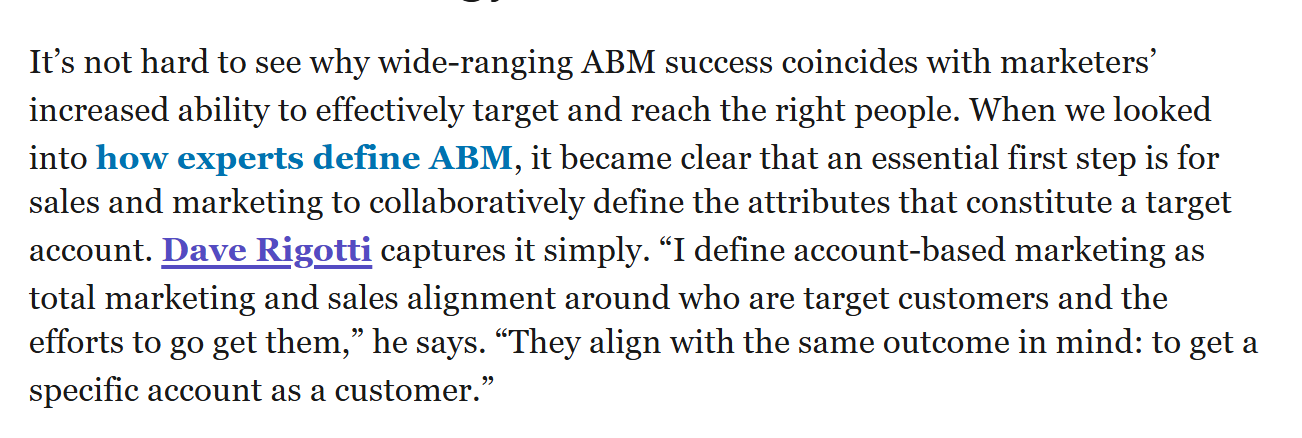
In traditional demand gen, marketing throws leads over the wall; in ABM, marketing and sales work in tandem on the same accounts, which is the backbone of any ABM motion.
Top organizations treat it as “Account-Based Everything”, where all customer-facing teams focus on priority accounts.
To achieve the tandem:
Decide on your ABM tiers and scope.
Most mature programs use a mix.
For programmatic ABM, define the criteria for accounts in this scaled tier (e.g. they fit ICP and show some intent, but aren’t top “whale” accounts that need white-glove treatment).
Clearly delineating tiers will help allocate resources and tailor your approach appropriately.
Align internal expectations that ABM takes careful orchestration and time, especially for ABM cycles.
I mean, B2B deals have long sales cycles (often 6–18 months) because of their never-ending complexity:
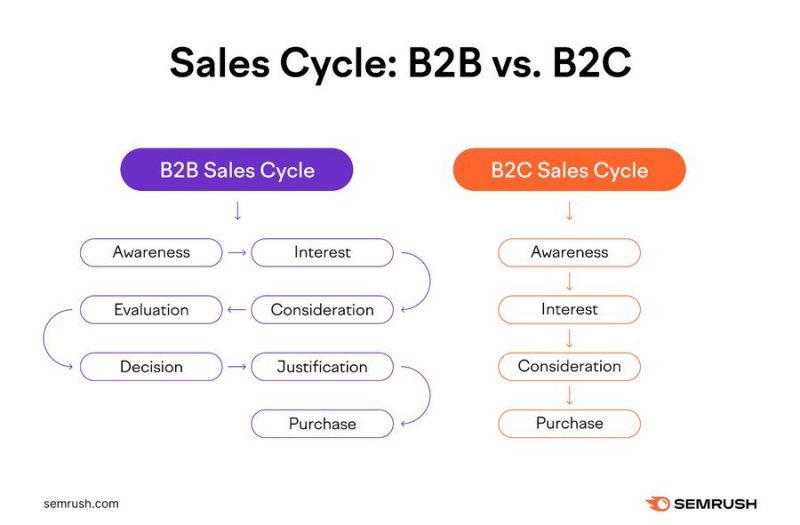
So, ABM initiatives should be given runway to influence the pipeline.
Programmatic ABM does require investment in content, tools, ads, and potentially data providers.
Plan your budget per account or per cluster for programmatic ABM forecasting.
A useful exercise is working backwards from revenue goals to determine how many accounts need to become opportunities, and therefore how many you must target and engage.
For instance, if you aim for 10 deals worth $100K each and expect a 10% win rate of target accounts, you might target ~100 accounts.
Use stage conversion benchmarks (like what % of targets typically become aware, engaged, etc.) to sanity-check these numbers.
The Userpilot ABM team, for instance, used industry benchmarks (from Kyle Poyar’s ABX research) to set stage-to-stage conversion targets and thus estimate the budget required for ads and touches to hit their pipeline goal.
By the way, we have a free LinkedIn ad ABM budget calculator that is useful for ABM planning.
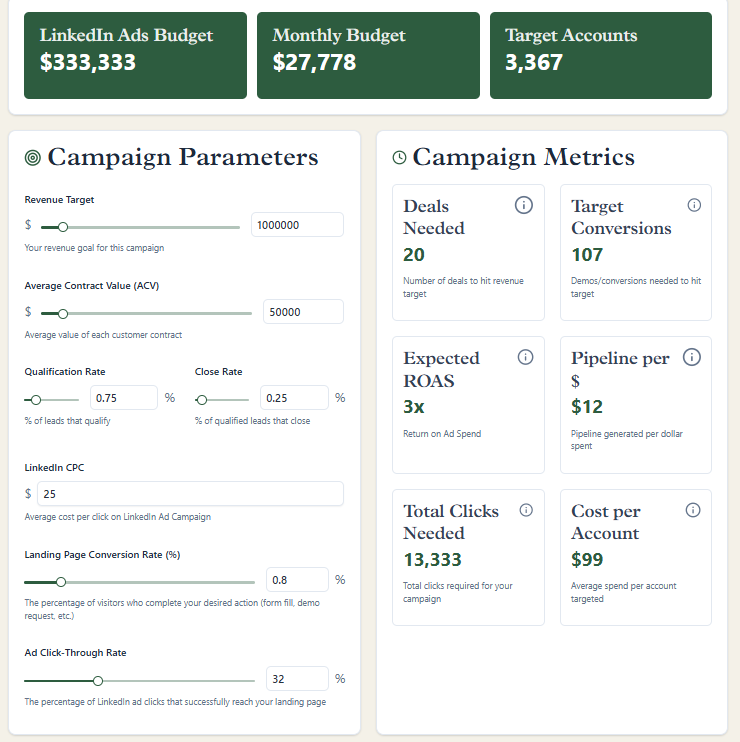
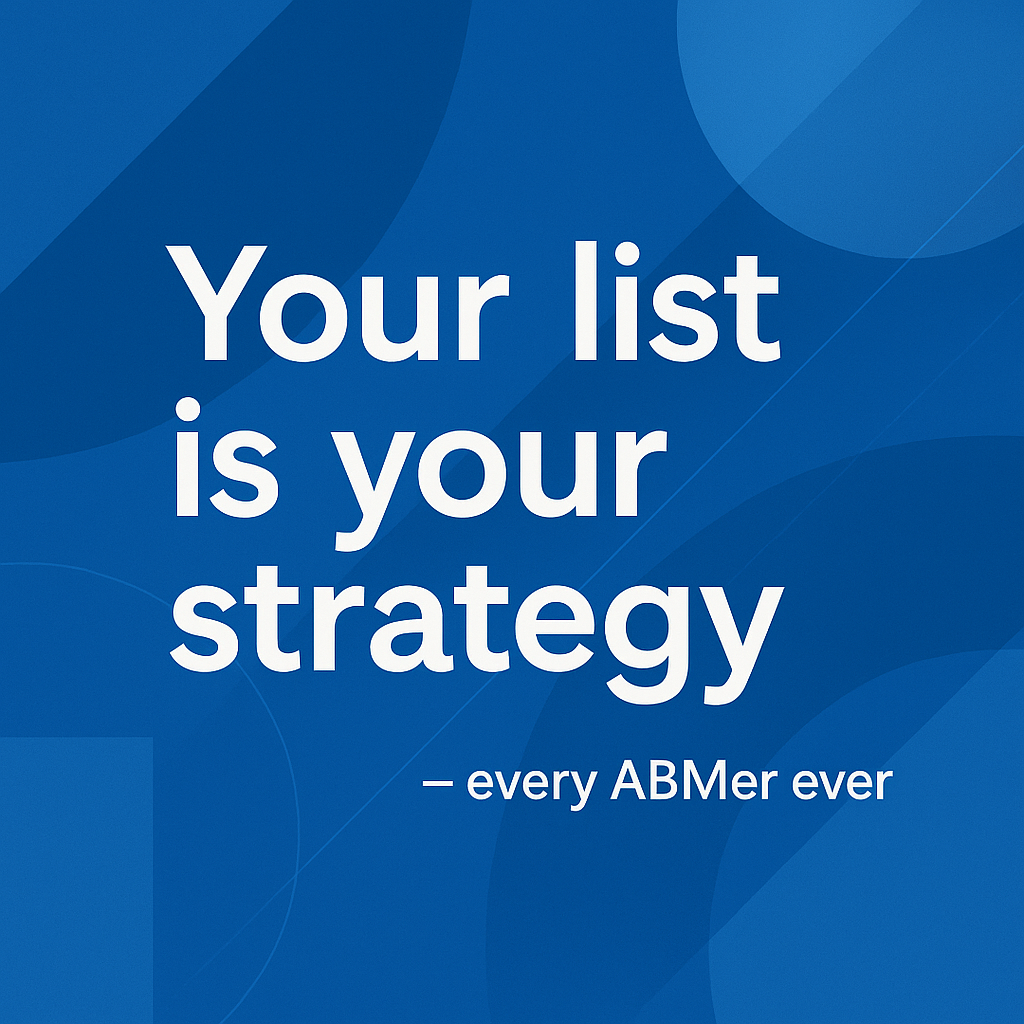
Selecting the right accounts is the single most important decision in ABM, because, as they say: Your list is your strategy!
And for that, you’ll have to nail your ideal customer profile (ICP) following these steps:
Go beyond firmographics:
The point: Of course, consider firmographics, technographics, and historical data, but don’t let the past alone dictate your targeting. Triangulate multiple data sets so your ICP reflects future potential, not just history.
Building your Target Account List (TAL) typically involves pulling a list of companies that match ICP attributes from sources like ZoomInfo, LinkedIn Sales Navigator, Crunchbase, Clearbit, etc.
Prioritize quality over sheer quantity.
Many experts suggest starting somewhat narrow for initial ABM pilots (e.g. a few hundred accounts), then expanding once the approach is proven.
Ensure sales is involved or at least validates the list; they often have account knowledge (e.g. “Oh, we already pitched that one last year”) that can refine it.
Also, categorize accounts by priority tiers: for instance, Tier 1 (must-win, maybe get extra personalization), Tier 2 (high value but less custom effort), Tier 3 (good fits to mostly hit with programmatic tactics). This tiering is really important to know which accounts need to be part of your programmatic ABM motion instead of being targeted with strategic 1:1 or 1:few ABM, and vice versa.
Not every ICP-fit account is ready.
Use intent and trigger signals to score inclusion for ABM prioritization.
Third-party intent from Bombora, 6sense, Demandbase, or RollWorks can flag topic surges; funding, hiring, and stack changes are strong triggers.
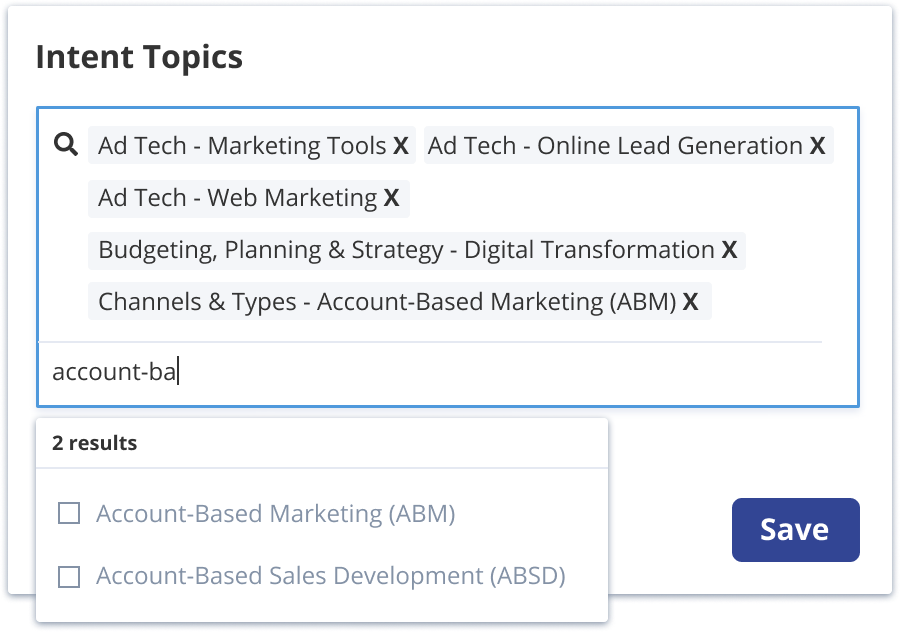
For a cleaner signal, ZenABM gives first-party, campaign-level intent by showing which LinkedIn ad engaged which company, with quantitative lift and the qualitative theme behind the creative.
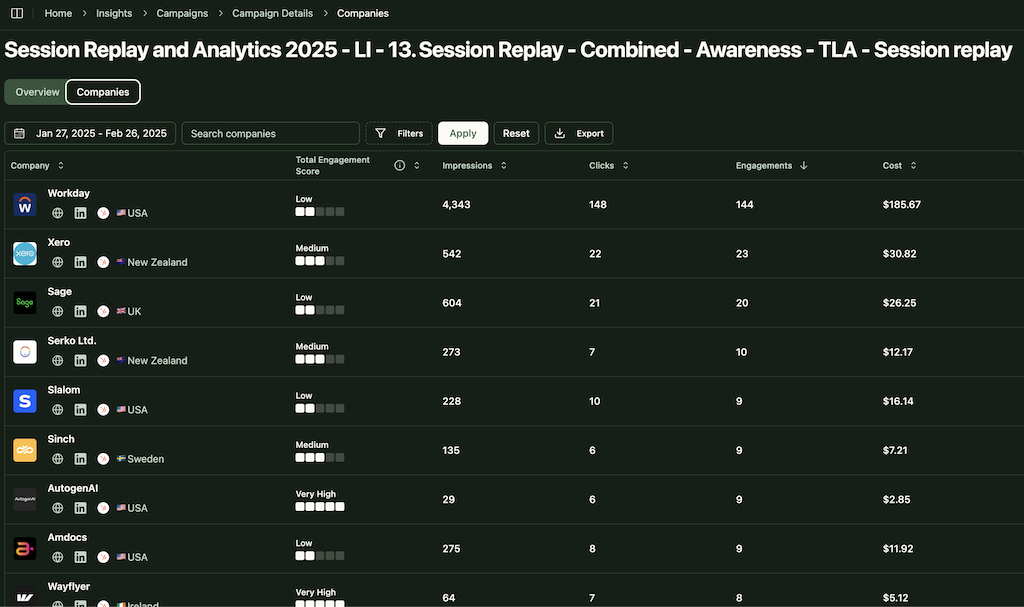

Best part?
All this individual ad-creative-level engagement data for each company is pulled straight from LinkedIn’s official ads API.
ABM, strategic or programmatic, needs tools.
Here are some I recommend, especially for data collection:
| Stage | Tool examples | What it does | Typical filters or signals | Output | Notes |
|---|---|---|---|---|---|
| Define TAM and shortlist accounts | HG Insights, Keyplay, LinkedIn, ZoomInfo | Build company lists from blended firmographic and technographic data | Industry, employee count, revenue band, tech stack, keywords | Ranked company list | HG Insights and Keyplay help shape TAM. LinkedIn and ZoomInfo refine by practical filters. |
| Overlay in-market intent | Bombora, 6sense, Demandbase intent | Identify which shortlisted companies are actively researching your topics | Topic surge, recency, velocity | In-market flags by account | Use to prioritize which accounts move up the list now. |
| Capture first-party campaign intent and analytics | ZenABM | Pull company-level LinkedIn ad impressions, clicks, and engagement. Score accounts and map ABM stages. Push properties to CRM. | Campaign engagement by company, recent vs all-time engagement, qualitative intent tags | Prioritized account list with scores and ABM stages, CRM write-back | First-party signal shows which ad intrigued which company. Quantitative and qualitative intent without third-party guessing. |
| Pull contacts at target accounts | Snov.io, ZoomInfo, other email finders | Find stakeholder emails once accounts are selected | Seniority, function, role keywords | Contact list per account | ZoomInfo is widely used but pricey. Helpful for multithreading. |
| Combine signals and score | Any spreadsheet or CRM model, ZenABM | Blend firmographics, technographics, intent, and reachability | Weighted scores, thresholds | Tiered account list with scores | Use ZenABM scores and CRM data to drive Tier 1, Tier 2, Tier 3 allocation. |
ABM isn’t just for new logos, and it should include existing customers for expansion and retention, which is a major use case in programmatic ABM expansion.
For instance, large accounts may be ripe for cross-sell or renewal, and ABM can educate new divisions or defend against competitors.
Mark current customers in your target list and design plays for them – this is account-based expansion.
Programmatic ABM isn’t about spraying ads but about scaling account intelligence.
You research each target with firmographic and technographic data, news, and social updates, then map the buying committee of users, influencers, and decision-makers and tailor messaging to each role.
Persona insights from forums or LinkedIn add nuance, while intent data from tools like Bombora or 6sense show which accounts are actively researching, helping you prioritize spend and timing.
Finally, tier and cluster accounts by industry, growth stage, or common challenges to create semi-personalized narratives that still resonate at scale. In short, programmatic
ABM supercharges insight-gathering across many accounts, so your outreach actually hits home.
Once you have account and persona insights, the next step is building content and messaging that proves you understand their business and problems for programmatic ABM content execution.
Start with a messaging matrix mapping your value props to each persona’s pain points, then align content by funnel stage, from thought leadership in awareness to ROI calculators and demos at consideration.
Personalize at scale with industry-specific landing pages, segmented ads, and lightly tailored emails, while reserving bespoke content like pitch decks or audits for top accounts.
Quality is non-negotiable—decision-makers expect insight-dense, credible material backed by data and third-party research.
Use creative formats like calculators, benchmark reports, or even microsites to stand out, and continuously A/B test messaging to refine what resonates at the account level.
In ABM, content isn’t about broadcasting features, it’s about delivering relevance, value, and proof in every interaction.
Programmatic ABM works when you orchestrate tailored messages across multiple channels so target accounts see you everywhere they turn.
LinkedIn Ads are the flagship, letting you zero in on company names, job roles, and seniority with sequenced content, while programmatic display extends reach across industry sites.
Retargeting keeps engagement moving forward, and email nurtures known contacts with personalized touches, often coordinated with SDR outreach once an account is warmed up.
Content syndication, sponsored newsletters, and even Reddit or Quora can put thought leadership in front of the right eyes.
Onsite personalization tools like Mutiny ensure that when targets click through, the experience feels built for them, while direct mail or gifts add a memorable offline touch.
The magic is in orchestration—planning sequences, aligning messaging, and monitoring account-level engagement so every channel reinforces the same story and sales steps in at just the right time.
Here’s how ZenABM can simplify your programmatic ABM motion on LinkedIn:
ZenABM powers programmatic ABM by pulling company-level LinkedIn ad engagement data (impressions, clicks, engagements) and ad spend across all your campaigns:


Beyond raw company-level engagement metrics, ZenABM rolls up historic and current signals across all campaigns to calculate a lead score, showing how aware or engaged each account is with your brand.

ZenABM also assigns ABM stages to every account based on engagement and CRM data, with thresholds that are fully customizable:
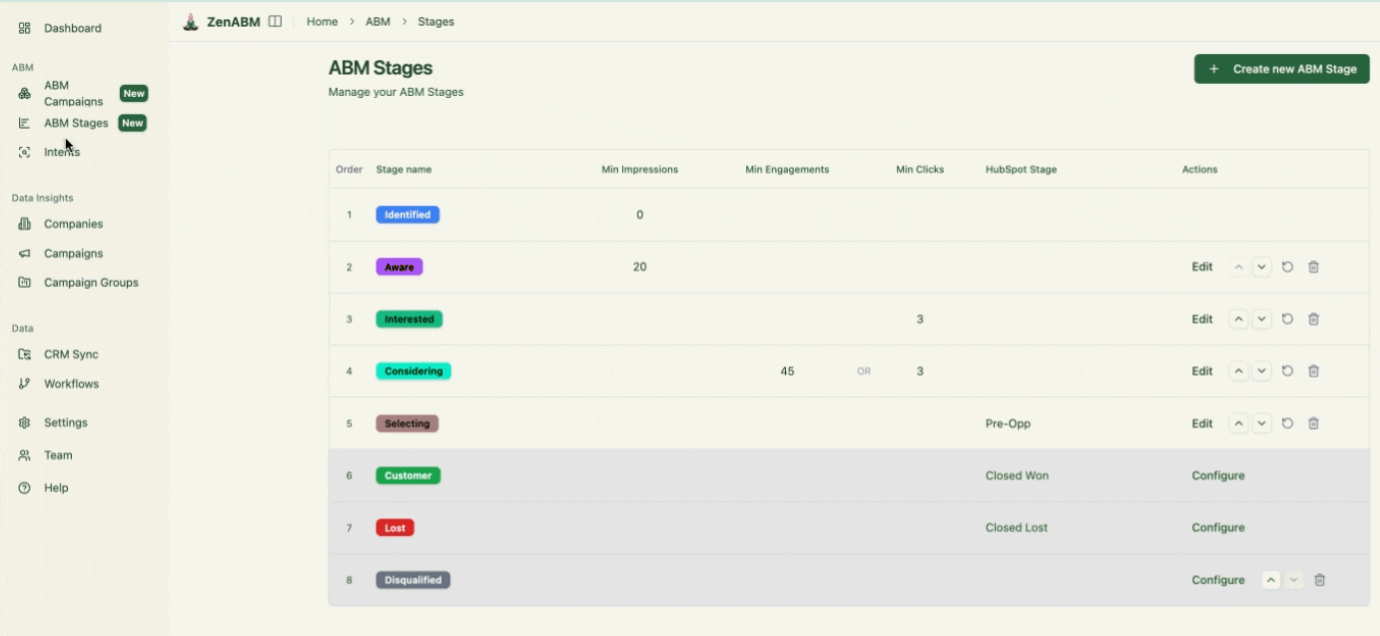
ZenABM automatically routes hot accounts (those in the “interested” stage) to your BDRs inside the CRM, removing the need for manual checks and Slack alerts.

To make programmatic ABM seamless between marketing and sales, ZenABM syncs all engagement data directly into your CRM as company properties:

It also matches engaged accounts to live deals and pulls deal values back, ensuring sales has both context and dollar impact.
With company matching and deal values in place, ZenABM delivers ready-made ABM analytics and ROI dashboards.



Instead of paying for third-party tools, ZenABM bakes intent tracking into your campaigns. Create separate ad campaigns for different buyer intents, tag them, and ZenABM will reveal which companies are interested in which offers:

ZenABM also groups similar intents and pushes them into your CRM, so BDRs not only know which accounts are hot but also what to pitch.

ZenABM shows how accounts move across funnel stages, surfacing where friction stalls them, so you can optimize conversion paths for programmatic ABM scale.
For advanced programmatic ABM workflows, ZenABM offers custom webhooks to connect with CRMs, MAPs, Clay, Apollo.io, and more.
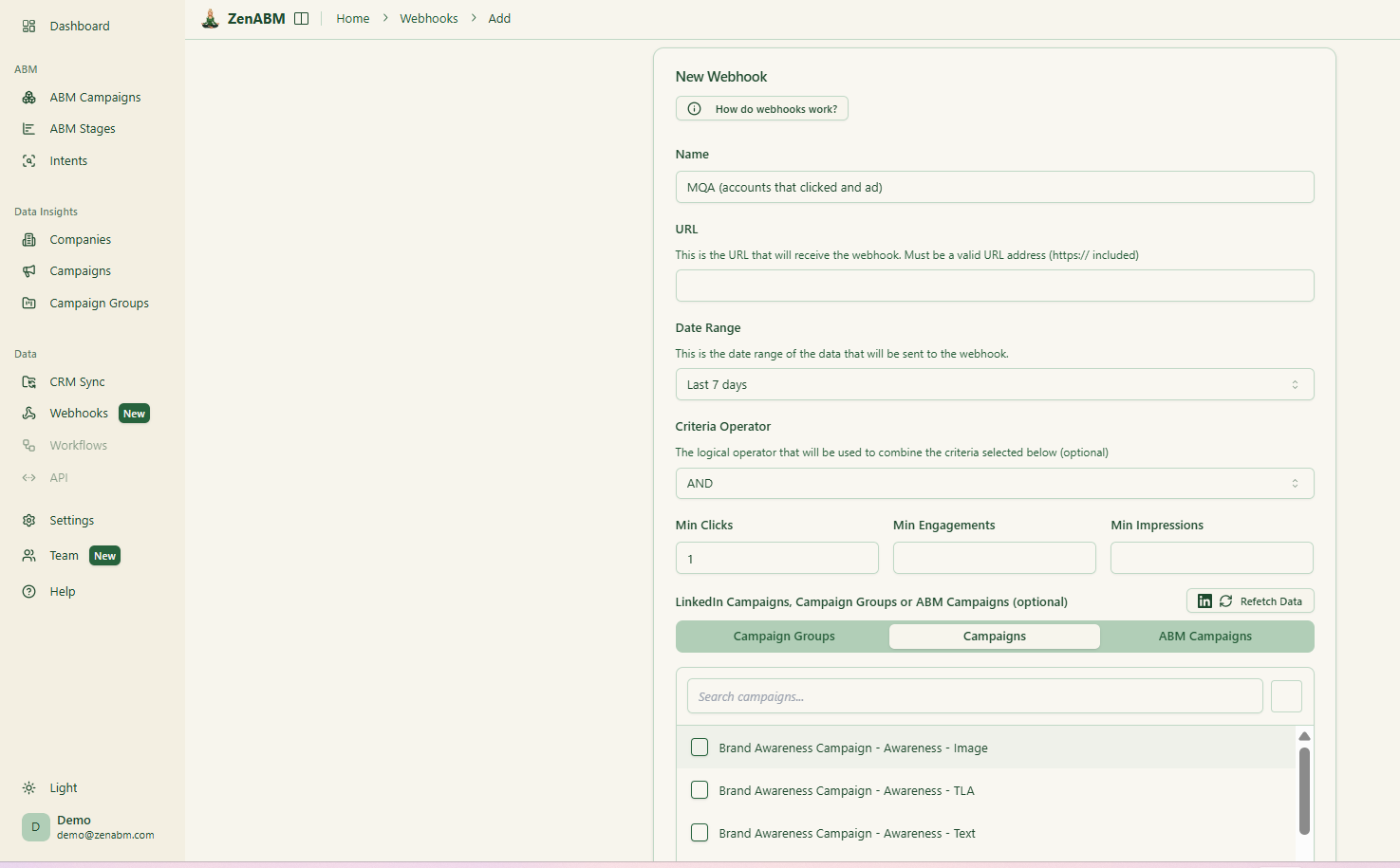
Programmatic ABM lets you put focus and scale on the same team. You identify the right accounts, tailor messages by persona and stage, and orchestrate touches across channels so buying committees see a single, coherent story. The result is a cleaner pipeline, faster cycles, and bigger deals compared to broad demand gen. If you already know your ICP and have a list, the next gains come from stronger intent signals, tighter orchestration, and better revenue attribution.
ZenABM helps here with company-level LinkedIn signals, ABM stage tracking, CRM sync, and plug-and-play ROI dashboards that make programmatic ABM measurable and repeatable.